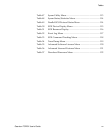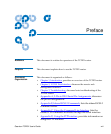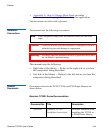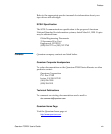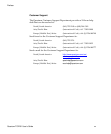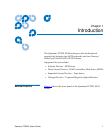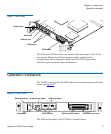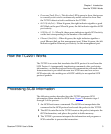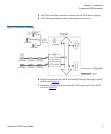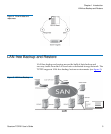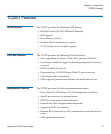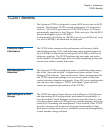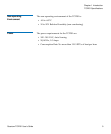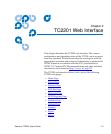
Chapter 1 Introduction
How the TC2201 Works
Quantum TC2201 User’s Guide 3
• Power and Fault (Pwr)—This bi-color LED is green to show that power
is currently active and is continuously amber-colored to show that
the TC2201 detects a fault condition in the TC2201.
• iSCSI (Link/Act)—When lit green, the right indicator signifies a good
iSCSI link on the port. When lit green, the left indicator signifies iSCSI
port activity.
• SCSI Bus (0, 1)—When lit, these green indicators signify SCSI activity
on the bus corresponding to the number of the indicator.
• Ethernet (Link/Act)—When lit green, the right indicator signifies a
good Ethernet link on this management port. When lit green, the left
indicator signifies Ethernet port activity on this management port.
How the TC2201 Works 1
The TC2201 is a router that translates the iSCSI protocol to and from the
SCSI Protocol—transparently transferring commands, data, and status
information—so that devices and hosts can communicate with each other.
Interconnection is provided between two SCSI buses and one or two
iSCSI networks, also making use of iSCSI’s ability to encapsulate SCSI
protocol packets.
Processing SCSI Information 1
The following section describes how the TC2201 processes SCSI
information when attached to iSCSI hosts.
Figure 3 illustrates steps 1
through 5 of the process.
1 An iSCSI host issues a command. The iSCSI host encapsulates the
command in the iSCSI protocol and sends the packet to the TC2201.
2 The iSCSI controller in the TC2201 receives the packet, interprets the
iSCSI information, and places the packet in buffer memory.
3 The TC2201’s processor interprets the information and programs a
SCSI controller to process the transaction.



